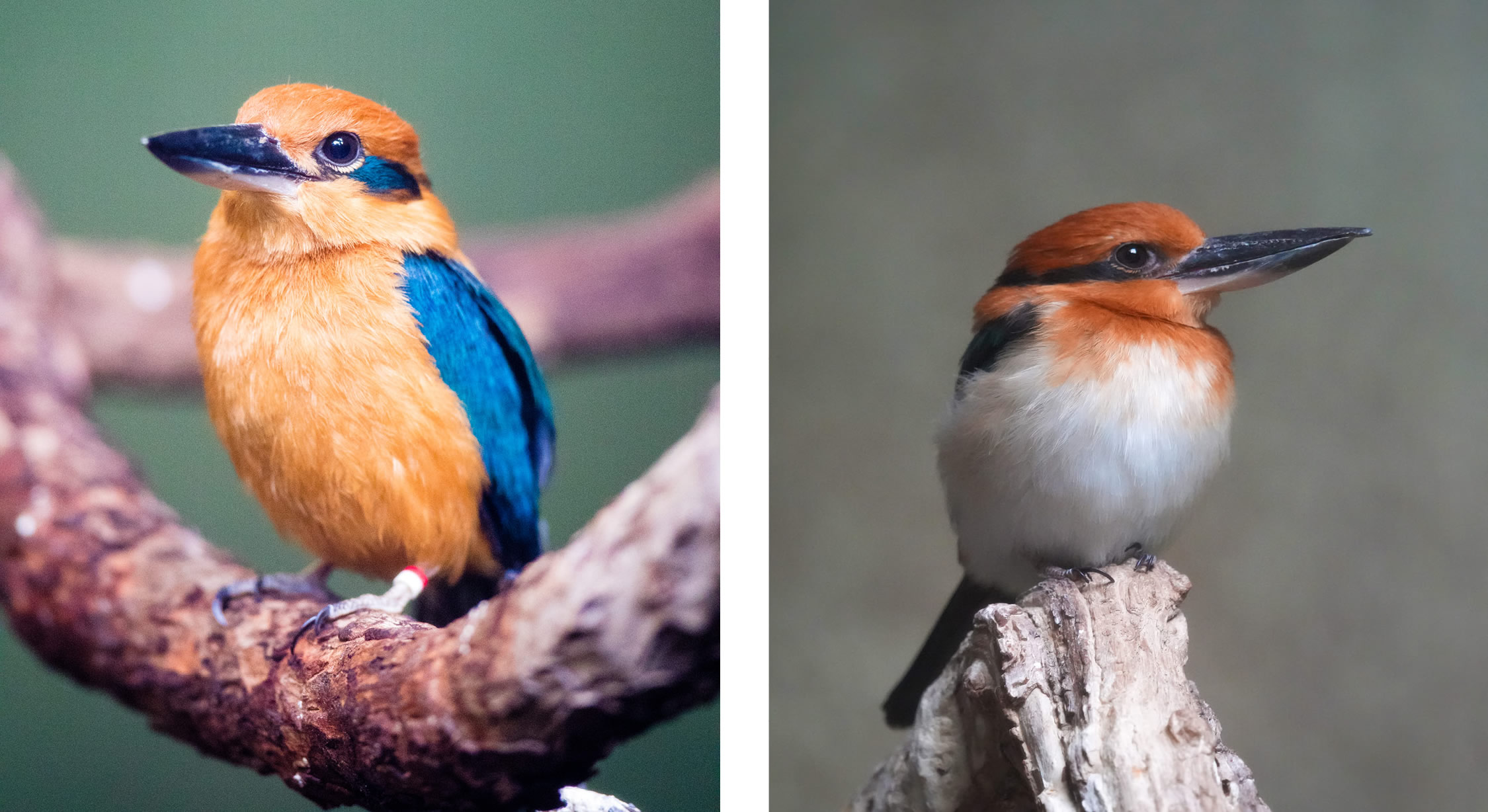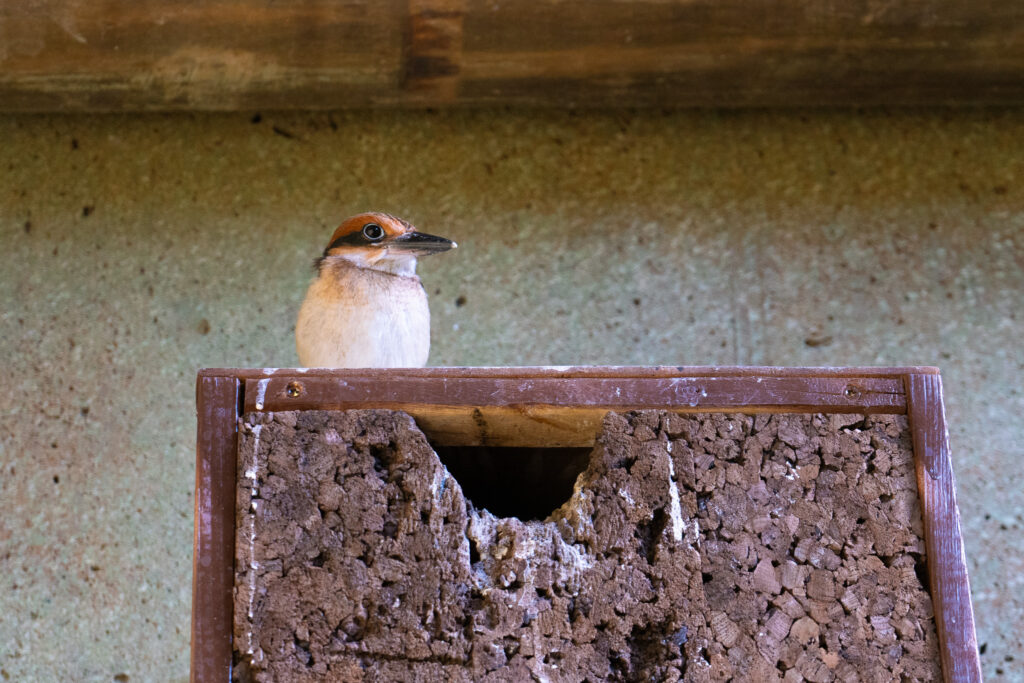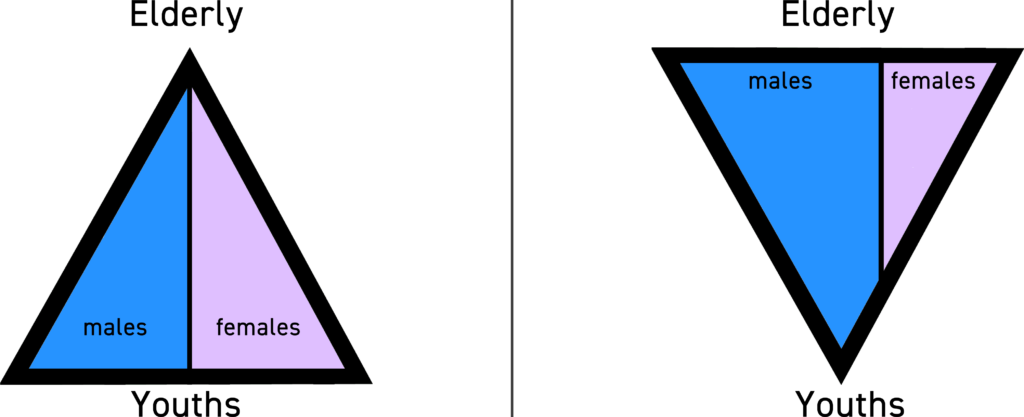In late July, Sedgwick County Zoo welcomed a Guam kingfisher chick, Poki.
“Poki” means “pleasantly chubby” in Chamorro, the native and spoken language of the Chamorro people of the Mariana Islands. The Chamorro name for the Guam kingfisher is Sihek.
While the hatching of any Guam kingfisher chick is exciting, the birth of a female is especially so.
“She is our first chick here at Sedgwick County Zoo, which we’re super excited about,” Zoological Manager Emma Koepp said. “She’s a female in a very male-heavy population. So, any female is really important. And our birds have never bred before, so their genetics have not really been represented. Overall, we’re just so excited about this whole thing.”
Guam kingfishers are extinct in the wild. The accidental introduction of the brown tree snake to the island in the mid-20th century decimated the population of many native bird species, including these kingfishers.
For years, Guam kingfishers have been reared in zoos with the goal of one day releasing these birds back into their native habitat. Progress is being made towards this goal; there is planned experimental release of Guam kingfishers on the Palmyra Atoll.
The breeding kingfisher pair at SCZ are first-time parents.

“Because they were first time parents, we were very careful with our observations to make sure that they were taking food to the chick because we weren’t sure how they would do. But they’ve been awesome parents,” Koepp said. “We were excited about it. So, we wanted to make sure that everything went well, but they gave us no reason to be nervous.”
Animals often have a hard time rearing their young the first time around. They haven’t quite figured out what to do and how to do it when it comes to upbringing. This sometimes means intervention from the keepers is required to ensure the chick’s survival.
“But we’ve seen no aggression, her parents have been so awesome with her. So, we’ve really been able to stay hands off, which is what we wanted,” Koepp said. “We were super excited that they were able to take the whole process from egg all the way to fledgling now and be successful in it.”
The kingfisher pair at SCZ took to parenthood full swing. In May, they began carving their nest cavity out of a zookeeper provided nest box covered in cork. In early July, the egg clutch was laid, and 23 days later Poki hatched.
The parents have been providing the necessary care and food to Poki since she hatched.
“So far, we’ve had no issues at all, we’ve just gradually increased the food size and food consumption amounts diet wise,” Koepp said. “That’s really been all we’ve done; we’ve had no intervention of keepers at all. So that’s been really awesome.”

Poki is the first Guam kingfisher to be hatched at SCZ, which has homed the bird species since 2015. But she won’t be staying for long. Once fully fledged, at around two months, she’ll make her way to a breeding center at another AZA location.
Scott Newland, SCZ’s president and CEO, has been involved with this conservation effort since 2016. He’s the studbook keeper for these birds, meaning he keeps track of the genetics of every Guam kingfisher pairing and offspring.
Several AZA locations are working with SCZ on the Guam kingfisher conservation efforts. By being sent to a designated conservation breeding center, Poki will be able to help further grow the Guam kingfisher population.
“It might seem odd that we’re pulling that chick already. When she’s ready to go, she’ll be sent off. But that would happen in the wild, her parents would chase her out of the territory,” Newland said. “They can breed as early as six to eight months; she will be reproductively active. She will probably have a breeding recommendation next summer.”
With female kingfishers, it’s imperative that they breed for as many seasons as they can. While a male can be reproductive into his teens, a female is only reproductive for nine or ten years. With the added fact that most birds are unsuccessful their first year or two of breeding, that narrows the reproductive window even further.

A successful species will have a population distribution resembling a pyramid. There will be plenty of youth in the population and fewer elderly, and they’ll be roughly equal male to female. The Guam kingfisher population resembles an inverted pyramid. There are few youths but plenty of elderly, and males outnumber females roughly 3 to 1.
“Every time we get a female hatched, it just is that much more exciting for the program,” Newland said. “To keep the population going, we are going to need to have as many female chicks hatch as possible.”
The successful rearing of Poki also implies that future breeding seasons will yield successes from her parents.
“That should translate into our success from now on,” Newland said. “We have very few first-year successful breeders, we have attempts, but they’re not always successful, because they have to learn what they’re doing.”
The Guam Kingfisher’s extinction is a tragedy. But through conservation, research, and a concerted effort, things are looking up for this bird.
Want to learn more about Guam kingfishers? Listen to our podcast episode about them.